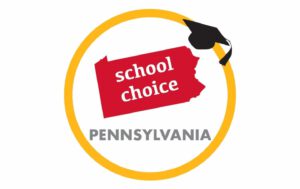Pennsylvania’s education reform legislative recap
(The Center Square) – Both legislative chambers left town this week after advancing sweeping educational reforms likely to wind up – in some form – woven into the state budget due June…

(The Center Square) – Both legislative chambers left town this week after advancing sweeping educational reforms likely to wind up – in some form – woven into the state budget due June 30.
While the plans don’t necessarily clash, Senate and House leaders do. The ideological strife will boil down to the estimated return on investment.
The upper chamber’s Grow PA plan includes seven proposals to expand the state’s higher education offerings that mostly focus on tuition grants tied to residency requirements. The programs provide $5,000 scholarships to students training for high-demand careers, so long as they live in Pennsylvania for 15 months after graduation.
Another proposal expands the income limits for an existing aid option, the Ready to Succeed Scholarship Program, from $126,000 to $175,000. A fourth bill covers tuition for adopted and fostered children. Two more bills create a special task force to analyze more reforms and mandate high school seniors complete forms for federal college aid, respectively.
Altogether, Senate lawmakers – who approved the bills Tuesday with bipartisan votes – believe the reforms will reverse Pennsylvania’s economic death spiral: a growing elderly population in need of social support and a shrinking working-age population unable to shoulder the tax burden.
“Pennsylvania faces serious economic and demographic challenges in the years ahead as more and more of our young people are pursuing education and employment opportunities in other states,” said Sen. Scott Martin, R-Strasburg. “Grow PA sends a powerful message that if young people are willing to learn here and put down roots here, we’re willing to invest in their future in Pennsylvania.”
A House leadership spokeswoman told The Center Square the bills are under review. In the meantime, the lower chamber has advanced an 87-page funding overhaul for K-12 schools.
The proposal uses complex calculus to balance concepts of tax equity and academic adequacy, as a solution to a recent constitutional mandate to overhaul the way lawmakers divvy out money across 500 school districts.
After two hours of debate on June 10, it cleared the House 107-94, including all Democrats and four Republicans. Its chances of clearing the Senate are steep, for now.
A spokeswoman for Senate leadership did not return a request for comment about the plan.
Still – using the Republican-controlled chamber’s commitment to fiscal conservancy as a guide – the seven-year, $6 billion investment suggested in the new formula’s fiscal note will fall flat.
Gov. Josh Shapiro asked for $1 billion in new K-12 education spending in his February budget proposal. The new formula’s success is based on $864 million in funding this year alone – roughly 50% higher than last year’s historic appropriation.
Supporters call the plan a victory for students held back by economic disparities. Critics point out 64 of the bill’s 87 pages focus on cutting financial support and tightening regulations for charter schools to save money.
It’s yet another provision Senate leadership will likely balk at, viewing it as an attack on school choice.



